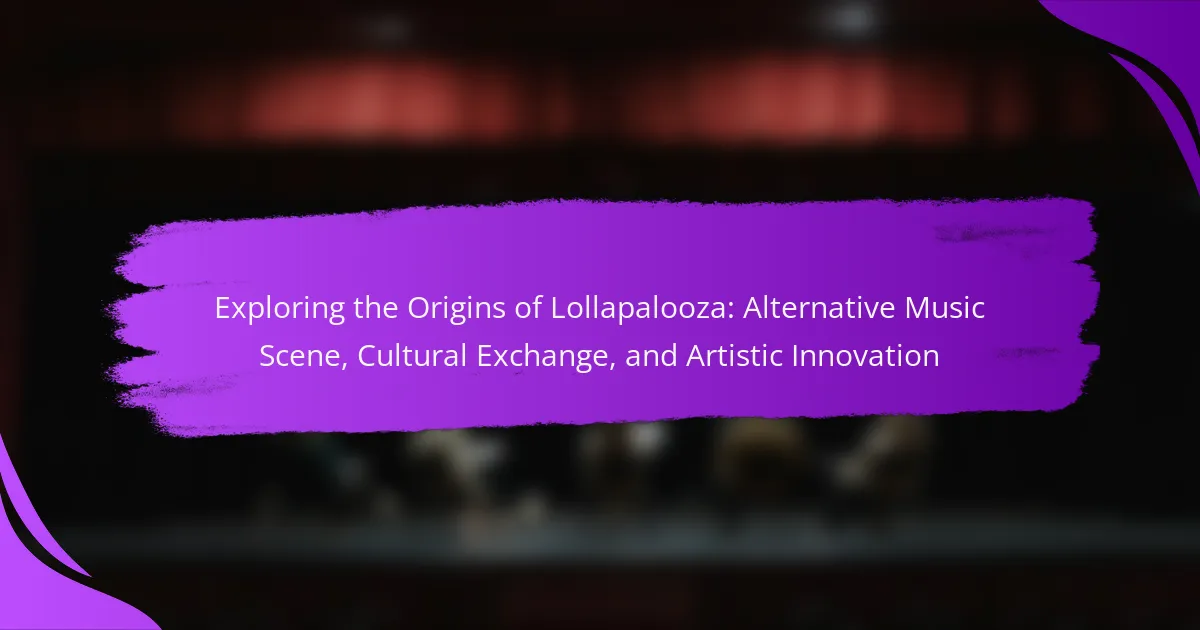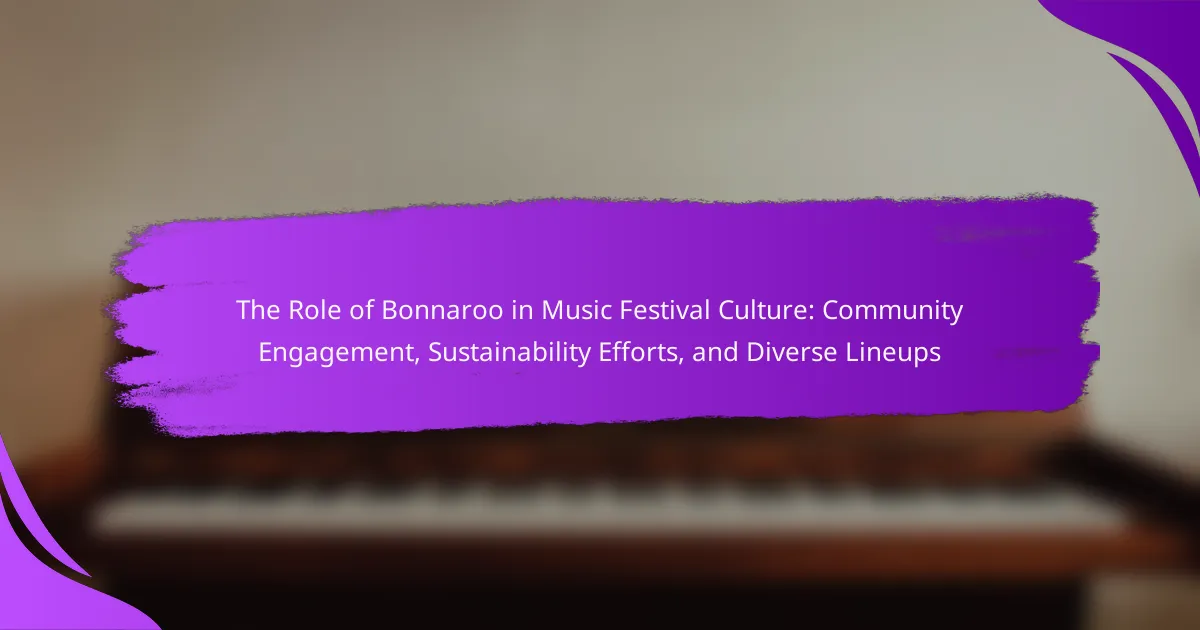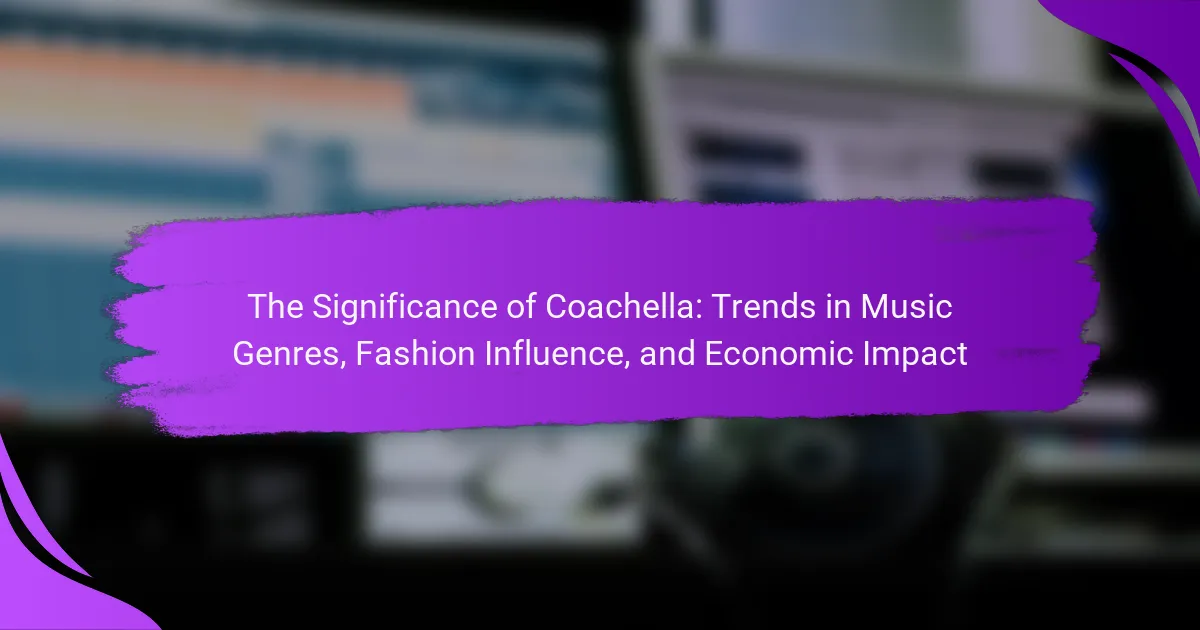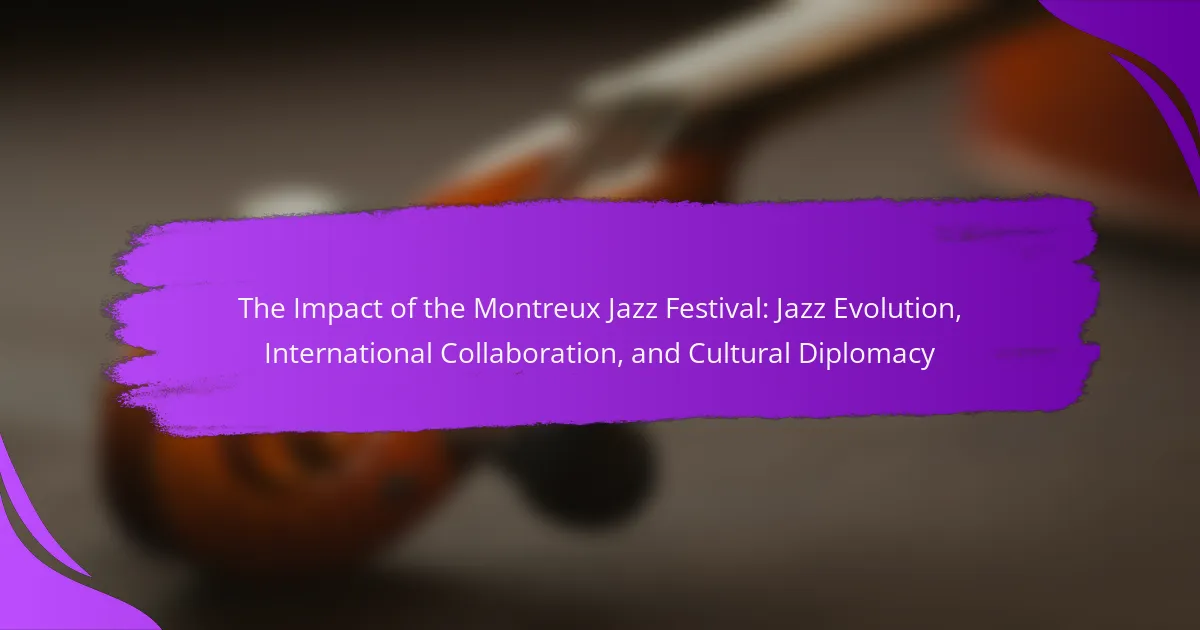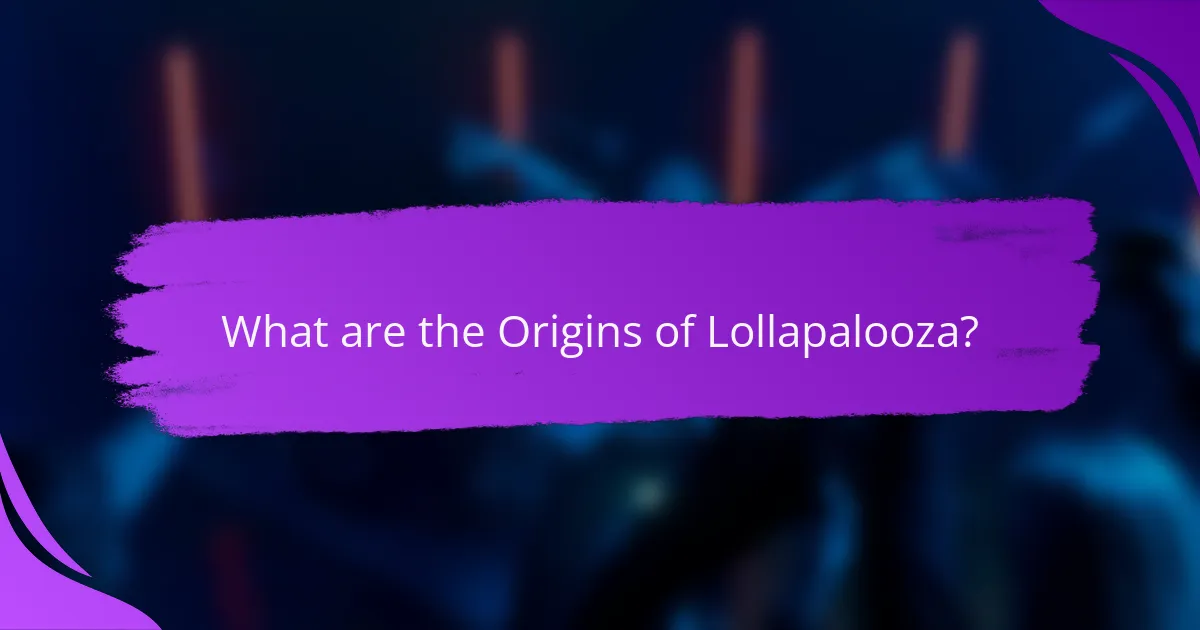
What are the Origins of Lollapalooza?
Lollapalooza originated in 1991 as a touring festival founded by Perry Farrell, the lead singer of Jane’s Addiction. The festival was initially conceived as a farewell tour for the band. It aimed to showcase alternative rock and other genres, promoting cultural exchange and artistic innovation. Lollapalooza featured a diverse lineup, including various music styles and performances. Over the years, it evolved into a multi-day festival held annually in Chicago. The event has expanded globally, with editions in countries like Brazil, Argentina, and Germany. Its origins reflect the rise of alternative music in the early 1990s and the desire for a platform that celebrated diverse artistic expressions.
How did Lollapalooza begin as a music festival?
Lollapalooza began as a music festival in 1991. It was created by Perry Farrell, the lead singer of Jane’s Addiction. The festival was initially conceived as a farewell tour for the band. Farrell wanted to showcase a variety of musical genres and artists. The first event featured alternative rock, punk, and hip-hop acts. It included performances by bands like Siouxsie and the Banshees and Living Colour. The festival was held in multiple cities across the United States. It gained popularity for its diverse lineup and unique atmosphere. Over time, Lollapalooza evolved into an annual music festival. It now attracts hundreds of thousands of attendees each year.
What were the initial goals and vision behind Lollapalooza?
Lollapalooza was initially created to promote alternative music and cultural exchange. The festival aimed to provide a platform for diverse musical acts. It sought to showcase emerging artists alongside established ones. The vision included fostering a sense of community among music fans. Lollapalooza also intended to encourage artistic innovation across various genres. It was designed as a traveling festival to reach different audiences. The inaugural event took place in 1991, organized by Perry Farrell of Jane’s Addiction. This festival model helped shape the landscape of music festivals in the following years.
Who were the key figures involved in its inception?
The key figures involved in the inception of Lollapalooza include Perry Farrell, who conceived the festival in 1991. He aimed to create a platform for alternative music and cultural exchange. Farrell was the lead singer of the band Jane’s Addiction. He organized the first Lollapalooza as a farewell tour for his band. Other significant figures included Marc Geiger, who helped manage the festival’s logistics. Additionally, the involvement of various artists contributed to its diverse lineup. Notable performers from the inaugural event included the Red Hot Chili Peppers and Soundgarden. These figures collectively shaped Lollapalooza into a landmark event in the music industry.
What role did the alternative music scene play in Lollapalooza’s development?
The alternative music scene was crucial in Lollapalooza’s development. It provided a platform for diverse, non-mainstream artists. Founded by Perry Farrell in 1991, Lollapalooza aimed to showcase alternative rock and other genres. The festival included influential bands like Jane’s Addiction and Soundgarden, which attracted dedicated fans. This focus on alternative music helped define the festival’s identity. Over the years, Lollapalooza expanded to include various genres, reflecting the evolving music landscape. The alternative scene’s grassroots approach influenced Lollapalooza’s community-driven atmosphere. Ultimately, the alternative music scene laid the foundation for Lollapalooza’s growth and cultural significance.
How did the alternative music genre influence the festival’s lineup?
The alternative music genre significantly influenced the festival’s lineup by prioritizing diverse and innovative acts. This genre’s emphasis on artistic expression encouraged the inclusion of non-mainstream artists. Festivals like Lollapalooza featured a mix of rock, punk, and indie bands that defined alternative music. The 1991 Lollapalooza lineup included iconic alternative acts such as Jane’s Addiction and Nine Inch Nails. Their presence showcased the genre’s impact on popular culture. Additionally, alternative music’s ethos promoted collaboration among artists across different styles. This led to a rich tapestry of performances that appealed to a broad audience. The festival’s commitment to alternative music has persisted, shaping its identity over the years.
What were the cultural trends in music leading up to Lollapalooza’s launch?
In the years leading up to Lollapalooza’s launch in 1991, the cultural trends in music were heavily influenced by the rise of alternative and grunge rock. Bands like Nirvana and Pearl Jam gained significant popularity, shaping the sound of the early ’90s. The alternative music scene saw a fusion of punk, metal, and indie influences, creating a distinct identity. Additionally, the 1980s saw the emergence of hip-hop and electronic music, which began to permeate mainstream culture. The blending of genres became a hallmark of this period, reflecting a diverse musical landscape. Festivals began to focus on multi-genre lineups, catering to a wider audience. This shift in cultural trends paved the way for Lollapalooza, which aimed to celebrate alternative music and cultural exchange.
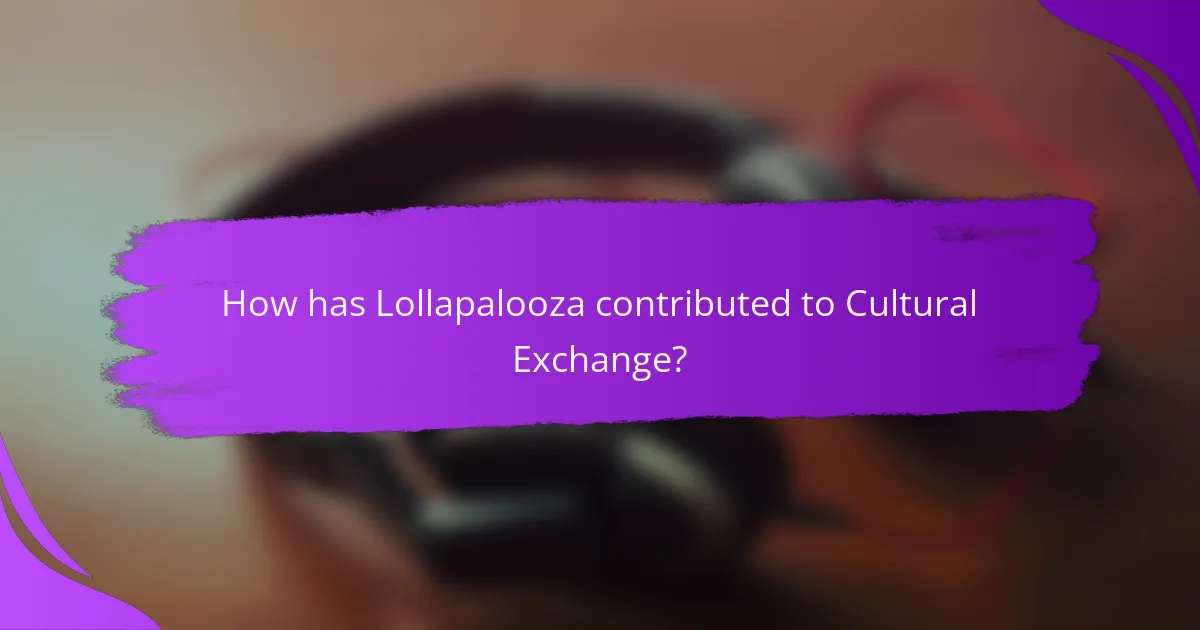
How has Lollapalooza contributed to Cultural Exchange?
Lollapalooza has significantly contributed to cultural exchange by showcasing diverse musical acts from various countries. The festival features artists from different genres and cultural backgrounds. This blend allows attendees to experience global music trends. Lollapalooza promotes collaboration between international and local artists. For instance, artists from Latin America often perform alongside American bands. Such interactions foster cross-cultural understanding and appreciation. The festival also attracts a global audience, enhancing cultural dialogue. In 2020, Lollapalooza expanded to cities like Paris and Berlin, furthering its international reach. This global presence amplifies the sharing of cultural expressions through music.
What cultural influences can be seen at Lollapalooza?
Lollapalooza showcases diverse cultural influences through its music, art, and community engagement. The festival features a wide range of genres, including rock, hip-hop, electronic, and pop, reflecting various musical traditions. International artists represent global sounds, promoting cultural exchange among attendees. Art installations and performances highlight local and global artistic expressions. Food vendors offer cuisine from different cultures, enhancing the festival’s multicultural atmosphere. Lollapalooza also emphasizes social issues, with initiatives that support diversity and inclusion. This blend of music, art, and community creates a rich tapestry of cultural influences at the event.
How does Lollapalooza showcase diverse musical genres from around the world?
Lollapalooza showcases diverse musical genres through its multi-genre lineup. The festival features artists from various cultural backgrounds and musical styles. Each year, it includes rock, hip-hop, electronic, and world music acts. This approach attracts a wide audience, reflecting global musical trends. The festival promotes cultural exchange by highlighting international artists. For example, in 2022, Lollapalooza featured acts from over 30 countries. This diversity enriches the festival experience. It fosters collaboration and innovation among artists from different genres. Overall, Lollapalooza serves as a platform for global musical representation.
What partnerships or collaborations have emerged from the festival?
Lollapalooza has fostered numerous partnerships and collaborations over the years. These include alliances with various brands, artists, and non-profit organizations. For instance, Lollapalooza has partnered with local businesses to promote economic growth in host cities. Collaborations with artists often lead to exclusive performances and unique festival experiences. Additionally, partnerships with environmental organizations aim to promote sustainability at the festival. This has included initiatives to reduce waste and promote recycling. Such collaborations enhance the festival’s cultural impact and community engagement. The festival’s ability to attract diverse sponsors also reflects its prominence in the music industry.
In what ways does Lollapalooza promote artistic innovation?
Lollapalooza promotes artistic innovation through diverse lineups and unique collaborations. The festival features a wide range of genres, showcasing both established and emerging artists. This variety encourages cross-genre experimentation. Lollapalooza also supports new talent, providing a platform for innovative acts. Collaborations between artists often lead to unique performances. The festival’s commitment to visual arts enhances the overall experience. Art installations and interactive exhibits stimulate creativity. Additionally, Lollapalooza fosters cultural exchange by attracting international artists. This global perspective encourages innovative ideas and artistic expression.
What unique artistic expressions are featured at Lollapalooza?
Lollapalooza features unique artistic expressions such as immersive art installations and live visual performances. These installations often include large-scale sculptures and interactive exhibits. Artists from various backgrounds showcase their creativity in different mediums. Live painting and digital art displays are also common. Street art and graffiti murals contribute to the festival’s vibrant atmosphere. The festival encourages collaboration between musicians and visual artists. This blend of art forms enhances the overall experience for attendees. Lollapalooza’s commitment to artistic innovation is evident in its diverse lineup and artistic offerings.
How have visual arts and performances evolved within the festival context?
Visual arts and performances have significantly evolved within the festival context by integrating diverse cultural expressions. Festivals now showcase multimedia installations that blend visual art with live performances. This evolution reflects a shift towards immersive experiences for attendees. Historically, festivals focused primarily on music, but visual arts have increasingly gained prominence. For example, Lollapalooza has featured large-scale art installations and interactive exhibits. These elements engage audiences beyond traditional performance formats. Additionally, collaborations between visual artists and musicians have become common. This collaboration enhances the overall festival atmosphere and fosters artistic innovation. Overall, the integration of visual arts has transformed festivals into comprehensive cultural experiences.

What Impact has Lollapalooza had on the Music Industry?
Lollapalooza has significantly influenced the music industry by popularizing alternative music festivals. It has provided a platform for emerging artists to gain exposure. Many acts that performed at Lollapalooza have achieved mainstream success afterward. The festival has also set a standard for festival experiences, integrating diverse genres and cultural elements. Its model has inspired numerous similar events globally. Lollapalooza’s impact is evident in its ability to attract large audiences, with over 400,000 attendees in recent years. This success has led to increased revenue for artists and local economies. Overall, Lollapalooza has reshaped the landscape of live music events.
How has Lollapalooza influenced emerging artists?
Lollapalooza has significantly influenced emerging artists by providing them a prominent platform to showcase their talent. The festival features a diverse lineup that includes both established and up-and-coming musicians. This exposure allows emerging artists to reach larger audiences and gain recognition. Many artists who perform at Lollapalooza have reported increased streaming numbers and social media followers post-festival. For instance, artists like Billie Eilish and Hozier gained substantial popularity after their performances. Additionally, Lollapalooza fosters networking opportunities among artists, industry professionals, and fans. This environment encourages collaboration and creative exchange, further enhancing their careers. Overall, Lollapalooza serves as a crucial stepping stone for emerging talent in the music industry.
What opportunities does the festival provide for new talent?
The festival provides platforms for new talent through performance slots and exposure to industry professionals. Artists can showcase their music to large audiences. Many emerging musicians gain recognition from festival performances. The festival often features a dedicated stage for up-and-coming acts. This stage allows new talent to perform alongside established artists. Networking opportunities arise through interactions with industry insiders. Workshops and panels at the festival educate artists about the music business. These opportunities can lead to further career advancement for new talent.
How do artists benefit from participating in Lollapalooza?
Artists benefit from participating in Lollapalooza through increased exposure and networking opportunities. The festival attracts large audiences, providing artists a platform to reach new fans. Artists can showcase their music alongside established acts, enhancing their credibility. The event fosters connections with industry professionals, including agents and promoters. Participation can lead to future performance opportunities and collaborations. Additionally, artists gain valuable experience performing in front of diverse crowds. Statistics show that many artists see a spike in streaming and sales following their performances at Lollapalooza. This combination of exposure, networking, and experience contributes significantly to an artist’s career growth.
What are the key takeaways from Lollapalooza’s history and evolution?
Lollapalooza originated in 1991 as a touring festival showcasing alternative music. It was founded by Perry Farrell, the lead singer of Jane’s Addiction. The festival aimed to create a platform for diverse musical genres and cultural exchange. Lollapalooza initially featured a mix of rock, punk, and hip-hop artists. In 1997, it transitioned to a multi-genre festival format, expanding its reach. After a hiatus from 1998 to 2002, it was revitalized as a destination festival in Chicago. The festival now includes a variety of art installations and culinary experiences. Today, Lollapalooza is one of the largest music festivals globally, attracting hundreds of thousands of attendees annually.
How can other music festivals learn from Lollapalooza’s model?
Other music festivals can learn from Lollapalooza’s model by implementing a diverse lineup and creating an inclusive atmosphere. Lollapalooza features a wide range of genres, attracting various audiences. This diversity enhances the festival experience and promotes cultural exchange. Additionally, Lollapalooza invests in high-quality production and amenities, ensuring attendee comfort. This focus on logistics contributes to overall satisfaction and repeat attendance. Furthermore, Lollapalooza utilizes strategic partnerships and sponsorships to enhance its brand and reach. Collaborations with local businesses and artists strengthen community ties. By adopting these strategies, other festivals can improve their appeal and operational success.
What best practices can be derived from Lollapalooza’s success?
Lollapalooza’s success offers several best practices for event organizers. First, diverse lineups attract broader audiences. The festival features a mix of genres, appealing to various musical tastes. Second, strategic partnerships enhance brand visibility. Collaborations with sponsors and local businesses create mutual benefits. Third, effective marketing strategies drive ticket sales. Lollapalooza utilizes social media and influencer promotions to reach potential attendees. Fourth, a strong focus on attendee experience fosters loyalty. The festival invests in amenities and activities beyond music, enhancing overall enjoyment. Lastly, adaptability to trends is crucial. Lollapalooza evolves its offerings based on audience feedback and industry changes. These practices contribute to its sustained popularity and success.
Lollapalooza is a prominent music festival that originated in 1991, founded by Perry Farrell of Jane’s Addiction to promote alternative music and cultural exchange. The festival started as a touring event and has evolved into a multi-day gathering held annually in Chicago, featuring diverse musical genres and attracting global audiences. Key themes include the influence of the alternative music scene on its development, the role of cultural exchange in its lineup, and its contributions to artistic innovation. The article will explore Lollapalooza’s historical context, its impact on emerging artists, and best practices that other music festivals can learn from its success.
